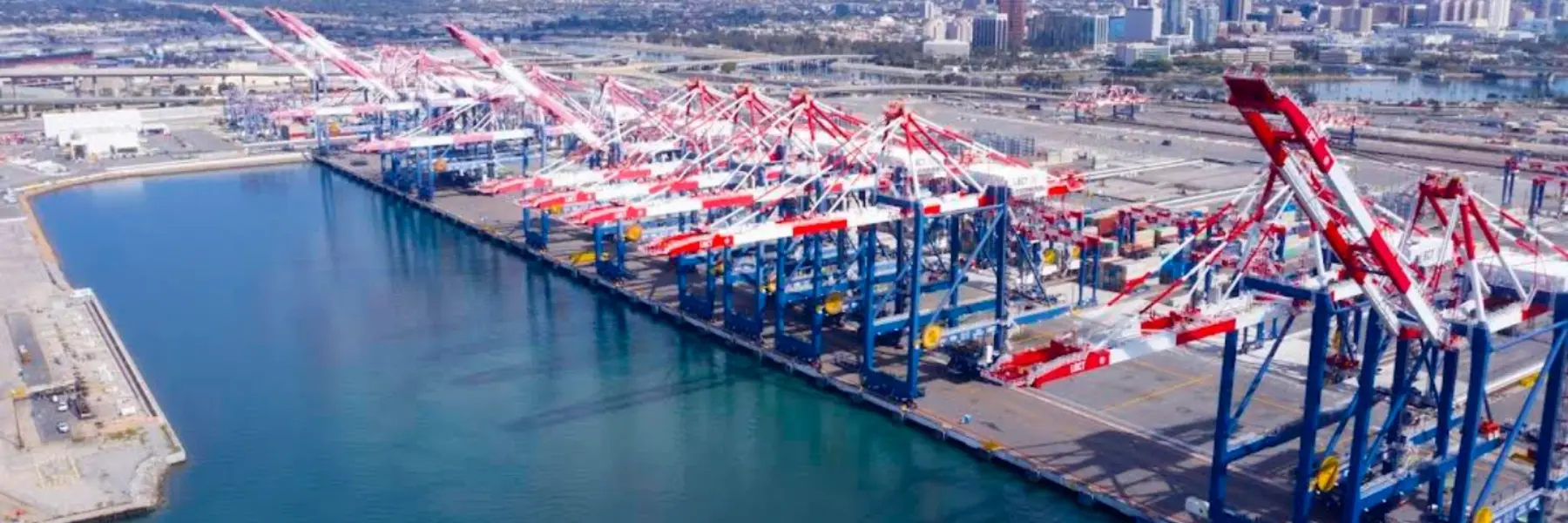 Complete Guide to Shipping from China to Wrangell: Rates, Schedules & Customs Tips
Complete Guide to Shipping from China to Wrangell: Rates, Schedules & Customs Tips
Wrangell, a remote coastal community in Southeast Alaska, depends entirely on global shipping to access essential goods—from fishing gear to tourism supplies—making shipping from China to Wrangell a lifeline for its economy. As a small town with no deep-water commercial port, cargo from China first arrives at larger Alaskan or U.S. West Coast international seaports (e.g., Port of Anchorage, Port of Seattle) before moving via regional barges or seaplanes to Wrangell. Navigating these logistics requires expertise in Alaskan weather risks, remote transit networks, and customs compliance—areas where a trusted China Freight forwarder like WanHaoFreight forwarder excels. This guide breaks down Ocean FCL, Ocean LCL, Ocean Freight, Airfreight costs, ship schedules, and customs rules to simplify shipping from China to Wrangell.
Ocean Freight from China to Wrangell: FCL vs. LCL
Ocean Freight is the primary mode for non-urgent cargo to Wrangell, accounting for over 65% of shipments (e.g., bulk fishing nets, tourism furniture, construction materials). Since Wrangell lacks direct ocean access, all ocean cargo follows a “hub-and-spoke” model: first to a major seaport, then to Wrangell via regional transport. It is split into two key modes: Ocean FCL (Full Container Load) and Ocean LCL (Less than Container Load).
Ocean FCL: Ideal for Bulk Fishing & Community Cargo
Ocean FCL involves booking an entire container (10+ cubic meters/CBM) for exclusive use, perfect for Wrangell’s fishing cooperatives importing bulk gear or the community sourcing large-scale supplies (e.g., building materials for local housing). Key benefits include reduced damage risk (sealed containers protect against saltwater and humidity) and predictable pricing (inclusive of hub-to-Wrangell transit).
Rates for Ocean FCL from China to Wrangell depend on three factors: Chinese origin port, hub seaport choice, and container size. The most common sizes are 20-foot (20GP) and 40-foot (40GP/40HQ). From Shanghai Port (a top international seaport), a 20GP container to Port of Anchorage (closest Alaskan hub to Wrangell) costs $2,000–$2,800, plus $900–$1,300 for regional barge transport to Wrangell (a 3–4 day journey). A 40HQ (high cube, for bulky fishing equipment) ranges from $2,500–$3,500, plus $1,100–$1,500 for regional delivery. From Shenzhen Port (another major international seaport), ocean rates to Anchorage are $150–$300 cheaper, but regional transit costs remain consistent. Seasonal peaks (March–May, ahead of Alaska’s salmon fishing season) raise ocean rates by 25–35%, while off-peak (October–December) offers 12–18% savings.
WanHaoFreight forwarder specializes in Ocean FCL solutions for shipping from China to Wrangell. Their team negotiates with Alaskan carriers (Alaska Marine Lines, Matson) for competitive hub seaport rates and coordinates with Wrangell’s local barge operators to secure priority slots—critical for community-wide cargo like winter fuel supplies. For fishing cooperatives with annual orders, WanHaoFreight offers long-term contracts to lock in combined ocean-regional costs.
Ocean LCL: Cost-Saver for Smaller Shipments
If your cargo is less than 10 CBM (e.g., small fishing parts, e-commerce goods for Wrangell’s general store, or medical supplies for the local clinic), Ocean LCL is the optimal choice. With LCL, goods are consolidated at the hub seaport (e.g., Seattle or Anchorage) with other shippers’ cargo, spreading costs across parties—essential for Wrangell’s small businesses and independent fishers.
Ocean LCL rates from China to Wrangell are calculated by chargeable weight (volume vs. actual weight). From Guangzhou Port (a key China Freight forwarder hub), rates to Port of Seattle are $90–$130 per CBM, plus $220–$370 per CBM for barge transport to Wrangell. For example, shipping 5 CBM of fishing hooks and first-aid kits from Guangzhou to Wrangell would cost $450–$650 (ocean to Seattle) + $1,100–$1,850 (regional transit) = $1,550–$2,500. Additional fees include consolidation ($55–$95), documentation ($35–$55), and hub seaport handling ($80–$110). Unlike many freight forwarders, WanHaoFreight provides all-inclusive quotes—no hidden surcharges for weather-related barge delays or winter transit adjustments.
Transit time for LCL is 38–48 days (22–28 days ocean to hub + 12–20 days regional to Wrangell), compared to 32–42 days for FCL. If time allows (e.g., non-urgent tourism supplies like hiking gear), LCL is a budget-friendly option for small-scale shipping from China to Wrangell.
Ocean Freight Schedules: China to Wrangell
Ship schedules to Wrangell are heavily influenced by Alaska’s extreme weather and hub seaport connectivity. Most cargo follows a two-step process: weekly sailings from China to hub seaports, then bi-weekly regional transit to Wrangell (weather permitting).
From Shanghai to Port of Anchorage: Carriers like Matson offer weekly sailings, with 24–28 days ocean transit. Regional barge service from Anchorage to Wrangell runs every 10–14 days (May–October, when Southeast Alaska waters are ice-free) and takes 3–4 days. Total transit time: 27–36 days. From Shenzhen to Anchorage: Weekly sailings take 26–30 days ocean + 3–4 days barge (total 29–38 days).
From Shanghai to Port of Seattle: Weekly sailings take 18–22 days ocean, with regional barge service to Wrangell adding 5–7 days. Total transit time: 23–29 days. Rates here are $200–$400 higher than Anchorage, but faster ocean transit suits time-sensitive cargo like fishing nets ahead of opening day.
Winter (November–April) is the biggest logistical challenge: ice in Southeast Alaska suspends barge service, forcing reliance on ice-ready trucks or seaplanes (adding $500–$800 to regional costs) and delaying transit by 5–10 days. Summer fog (July–August) may cause 1–2 day barge delays. WanHaoFreight forwarder provides real-time tracking for ocean and regional stages, including ice and fog updates, so Wrangell’s businesses can plan ahead. Book 4–6 weeks in advance to secure hub sailings and (in summer) barge slots.
Airfreight from China to Wrangell: Speed for Urgent Cargo
Airfreight is critical for Wrangell’s urgent needs—such as emergency fishing parts, medical supplies, or perishable food (e.g., fresh produce for tourism). Cargo first flies to Anchorage’s Ted Stevens International Airport (ANC) or Juneau International Airport (JNU), then moves via regional seaplanes to Wrangell’s small airport (WRG).
Airfreight Rates & Transit Time
Airfreight rates from China to Wrangell depend on weight and regional connectivity. From Shanghai Pudong to ANC: Direct cargo flights (14–16 hours) cost $4.40–$6.90 per kilogram. Regional seaplane transport from ANC to WRG adds $2.00–$3.00 per kilogram, plus $60–$100 for ground handling in Wrangell. For example, shipping 80kg of emergency medical oxygen from Shanghai to Wrangell would cost $352–$552 (China to ANC) + $160–$240 (ANC to WRG) + $60–$100 (local delivery) = $572–$892.
Non-direct flights (via Seattle) cost $3.60–$5.90 per kilogram to JNU but add 1–2 days to transit. Total time for direct Airfreight: 5–7 days (flight + customs + regional seaplane); non-direct takes 7–9 days but saves 15–25% on costs.
WanHaoFreight forwarder partners with airlines specializing in Alaskan routes (Alaska Airlines, Cathay Pacific) and regional seaplane operators (Wrangell Aviation) to secure priority space—critical during fishing season or medical emergencies. They also offer temperature-controlled Airfreight for perishables (e.g., vaccines for the local clinic) and door-to-door service, covering pickup from Chinese warehouses to delivery at Wrangell’s docks or clinic.
Customs Clearance for Wrangell-Bound Cargo
Customs clearance for Wrangell shipments occurs at the hub seaport/airport (Anchorage/Seattle/ANC) and is managed by U.S. Customs and Border Protection (CBP). As a remote community, delays can disrupt essential supplies—so compliance is critical.
Required Documentation
WanHaoFreight forwarder helps prepare these documents to avoid errors. For example, missing NOAA permits for fishing nets can delay clearance by 5–7 days—their team works with Wrangell’s fishing cooperative to ensure compliance with Alaska’s fisheries regulations.
Tariffs & Duties
Tariffs on goods from China to Wrangell depend on HS codes. Key examples for Wrangell’s economy include:
Duties are calculated as a percentage of the goods’ FOB (Free On Board) value. Wrangell has no local import taxes, but Alaska’s state sales tax (0–7.5%, varying by borough) applies to goods sold within the community. WanHaoFreight assists with duty drawback programs—if you re-export fishing gear from Wrangell to Canada, you may qualify for a refund of duties paid.
Compliance Checks
CBP focuses inspections on high-risk cargo: fishing gear (for adherence to Alaska’s sustainability rules), medical supplies (for safety), and food products (for contamination). To avoid delays:
WanHaoFreight partners with third-party testing labs in China to verify compliance before shipping, reducing inspection risk by 45–55%—critical for avoiding missed deadlines in Wrangell’s short fishing season.
How to Choose the Right Freight Forwarder for Shipping from China to Wrangell
Wrangell’s remote location and Alaska-specific challenges demand a freight forwarder with regional expertise and a focus on community needs. Here’s why WanHaoFreight forwarder stands out:
Expertise in China-Wrangell Routes
WanHaoFreight has over 10 years of experience shipping to remote Alaskan communities like Wrangell. Their team understands the nuances of Southeast Alaska’s barge networks, winter transit alternatives (ice-ready trucks, seaplanes), and the unique needs of Wrangell’s industries (fishing, tourism, community services). They even coordinate with Wrangell’s harbor master to schedule barge deliveries around high tides.
Transparent Pricing & Easy Get A Quote Process
Their website’s “Get A Quote” tool lets you input cargo details (e.g., “5 CBM fishing parts,” “100kg medical supplies”) and receive a personalized, all-inclusive quote within 24 hours. The quote breaks down ocean/air costs, regional transit fees (including winter surcharges), customs charges, and handling fees—no hidden surprises for Wrangell’s small businesses.
Full-Service Support
WanHaoFreight handles end-to-end logistics: warehouse storage in China, cargo insurance (covering ocean, regional barge/seaplane transit, and weather damage), customs clearance, and delivery to Wrangell’s docks, clinic, or fishing cooperative. They act as a single point of contact, updating you on cargo status via phone or email—critical for remote communities where communication gaps cause stress.
Conclusion
Shipping from China to Wrangell requires navigating Alaska’s harshest conditions and most remote logistics, but with WanHaoFreight forwarder, it’s manageable. Choose Ocean FCL for bulk cargo like fishing gear, Ocean LCL for small shipments like e-commerce goods, or Airfreight for urgent needs like medical supplies. Leverage hub seaports like Anchorage or Seattle for cost savings, and rely on WanHaoFreight’s expertise to avoid winter delays or compliance issues. With transparent pricing, easy “Get A Quote” access, and a focus on Alaska’s remote communities, WanHaoFreight ensures Wrangell receives the goods it needs to thrive. Ready to start? Contact WanHaoFreight today for your personalized China-to-Wrangell shipping solution.
 Easy Shipping From Global, Save Cost
Easy Shipping From Global, Save Cost














